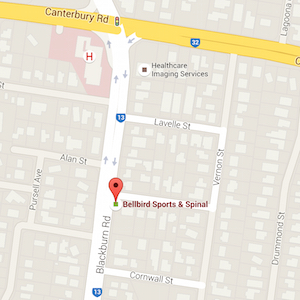Kids sport post lockdown – injuries on the rise
It is wonderful to see that kids sport is back pretty much in full swing in 2021. Sport has so many wonderful benefits for children for their physical, social, and psychological health (Micheli et al., 2011). After such a disrupted year of kids’ sport in 2020 it is no real surprise that we are seeing a lot of school aged children developing new aches, pains and injuries as a result of returning to sport. Combine the lack of sport and general physical activity with many hours of online learning, and the return to sport can come as a bit of a shock to the system.
Unlike adults, kids have the added complexity of growth thrown into this mix. As children grow, their muscles need to strengthen to cope with to the increased forces that result from longer limbs, and their co-ordination and motor skills must also adapt. Take the example of holding a weight close to your body versus further away – the weight feels heavier and harder to control the further it is away from your body due to the longer levers involved – the same thing happens as your children’s bones grow and lengthen. Ordinarily, a child who is physically fit and active will develop the required strength and control naturally as they grow and participate in sport and activity. However, with lockdown, their growth has continued whilst their strength and control may have decreased not increased!
The good news is that coaches in general appear to be well-aware that their youth players are not at their usual level of fitness and preparation. In my experience, coaches are being rightly cautious when it comes to players developing niggles, encouraging them to reduce their training and playing intensity and often seek treatment. This is very encouraging to see as a physiotherapist, as it shows that many coaches are in-tune with the needs of their players in this unusual year. Their approach also follows the recommendations of the Australian Institute of Sport for a graded return to sport to minimise injury risk post lockdown (Hughes et al., 2020).
This year more than ever it is extremely important to get any niggles or pains seen to by a physiotherapist, as a proper assessment can reveal strength and condition deficits before they turn into a more significant injury. Any injuries that do occur may require more physiotherapy input and thus even more downtime from sport, as players are starting their rehabilitation at a lower baseline than usual. Children are very resilient and respond wonderfully to rehabilitation exercises, the key is to act early and then they can move on! (literally!)
Brown, K. A., Patel, D. R., & Darmawan, D. (2017). Participation in sports in relation to adolescent growth and development. Translational pediatrics, 6(3), 150–159. https://doi.org/10.21037/tp.2017.04.03
Dahab, K. S., & McCambridge, T. M. (2009). Strength training in children and adolescents: raising the bar for young athletes?. Sports health, 1(3), 223–226. https://doi.org/10.1177/1941738109334215
Hughes, D., Saw, R., Perera, N., Mooney, M., Wallett, A., Cooke, J., Coatsworth, N., & Broderick, C. (2020). The Australian Institute of Sport framework for rebooting sport in a COVID-19 environment. Journal of science and medicine in sport, 23(7), 639–663. https://doi.org/10.1016/j.jsams.2020.05.004
Micheli, L., Mountjoy, M., Engebretsen, L., Hardman, K., Kahlmeier, S., Lambert, E., Ljungqvist, A., Matsudo, V., McKay, H., & Sundberg, C. J. (2011). Fitness and health of children through sport: the context for action. British journal of sports medicine, 45(11), 931–936. https://doi.org/10.1136/bjsports-2011-090237




